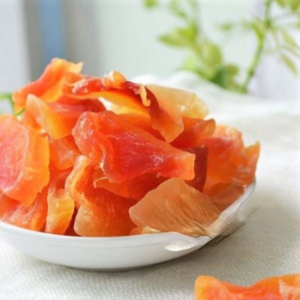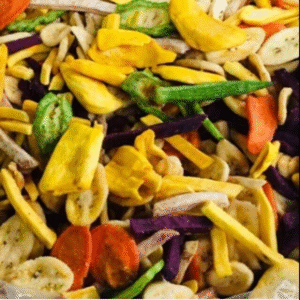Last updated on February 26th, 2025 at 03:56 am
Introduction
Coffee enthusiasts often debate whether dark roast or light roast coffee contains more caffeine. It’s a common myth that dark roast coffee, because of its bold flavor, has more caffeine than light roast. However, the truth may surprise you. In this article, we will explore the actual caffeine content in both dark and light roasts, compare them, and discuss the factors that determine caffeine levels in your cup of coffee.
For a more in-depth understanding of how roasting impacts the flavor and quality of coffee, check out our article on how natural oils affect roasted coffee flavor.
Caffeine Content in Dark and Light Roast Coffee
1. Caffeine Content Breakdown
At first glance, you might think that the darker the roast, the more caffeine it contains. However, the caffeine content is actually slightly lower in dark roast than in light roast. This is due to the roasting process itself.

Here’s a breakdown of the average caffeine content:
| Roast Type | Average Caffeine per 8 oz (mg) | Average Serving Size (g) |
|---|---|---|
| Light Roast | 95 mg | 12 g |
| Medium Roast | 90 mg | 12 g |
| Dark Roast | 85 mg | 12 g |
As shown in the table, the caffeine content in an 8 oz cup of light roast coffee averages about 95 mg, while dark roast coffee contains only 85 mg on average. So, despite the darker flavor profile, dark roast coffee actually has slightly less caffeine than light roast coffee.
If you are curious about how much caffeine is in a larger serving, check out our article on how much caffeine in a 16 oz cup of coffee.
2. Why Does Dark Roast Coffee Have Less Caffeine?
It all comes down to the roasting process. When coffee beans are roasted, the heat causes the caffeine to degrade slightly. Darker roasts undergo longer roasting times at higher temperatures, which results in a more intense flavor but a decrease in caffeine content. Light roasts, on the other hand, are roasted for a shorter period, allowing them to retain more caffeine.
However, it’s important to note that the actual difference in caffeine content is not as significant as many people believe. The variation is generally around 10 mg per 8 oz cup, which is not likely to make a major impact on your daily caffeine intake.
To learn more about how roasting affects the flavor of coffee, check out how roasting affects coffee flavor.
How Brewing Method Affects Caffeine Content
While roast type plays a role in caffeine levels, how you brew your coffee can be just as important. The amount of caffeine extracted depends on the brewing method, the grind size, and the coffee-to-water ratio.
- Espresso: Espresso has a high concentration of caffeine. Even though espresso uses dark roast beans, it contains more caffeine per ounce than regular drip coffee due to the high-pressure extraction process.
- Drip Coffee: If you’re brewing with a drip coffee machine, the caffeine extraction will be more balanced. For medium strength, an 8 oz cup made from light or medium roast beans usually has about 90 mg of caffeine.
- French Press: French press coffee also extracts more caffeine from the beans because it uses a longer extraction time and steeper grind. A typical French press cup made with light or medium roast beans may contain up to 100 mg of caffeine.
Comparing Caffeine Levels Between Dark and Light Roast
Here’s how dark and light roasts compare in terms of caffeine content:
| Roast Type | Caffeine per 8 oz (mg) | Flavor Profile |
|---|---|---|
| Light Roast | 95 mg | Bright, acidic, floral |
| Medium Roast | 90 mg | Balanced, mild |
| Dark Roast | 85 mg | Bold, smoky, bitter |
As we can see, while light roast coffee has a slight caffeine edge over dark roast, the difference is minimal. The flavor profile, however, is much different, with light roasts tending to have a more pronounced acidity and floral notes, whereas dark roasts are typically bold and smoky with a more bitter taste.
For more insights into the differences between roasts, you can visit our page on the difference between Robusta and Arabica beans.
Factors That Influence Caffeine Extraction
While roast type is important, here are additional factors that impact caffeine content:
- Grind Size: Finer grounds expose more surface area, allowing more caffeine to be extracted. If you’re brewing with a fine grind, you’ll get more caffeine in your cup.
- Coffee-to-Water Ratio: The more coffee grounds you use, the higher the caffeine content. For example, if you use 1.5 tablespoons of coffee per 8 oz of water, you’ll get a stronger brew.
- Brew Time: The longer the brew time, the more caffeine will be extracted. French press or cold brew methods often result in higher caffeine content due to longer extraction.
If you’re looking to experiment with brewing techniques, our coffee grind size chart can help you determine the best grind for your preferred method.
FAQ Section
1. Does dark roast have more caffeine than light roast?
No, dark roast coffee generally has less caffeine than light roast coffee due to the longer roasting process.
2. How can I make my coffee stronger?
Use a coarser grind, increase the coffee-to-water ratio, or use a brewing method like French press or espresso to extract more caffeine.
3. What brewing method extracts the most caffeine?
Espresso and French press methods tend to extract the most caffeine due to their longer extraction times and higher pressure.
Conclusion
In summary, light roast coffee typically contains a little more caffeine than dark roast coffee, but the difference is relatively small—around 10 mg per 8 oz cup. While the roasting process reduces caffeine in dark roasts, factors like brewing method and coffee bean type also play a significant role in caffeine extraction.
If you’re looking for the best coffee to suit your needs, explore our selection of roasted coffee beans from Vietnam.








